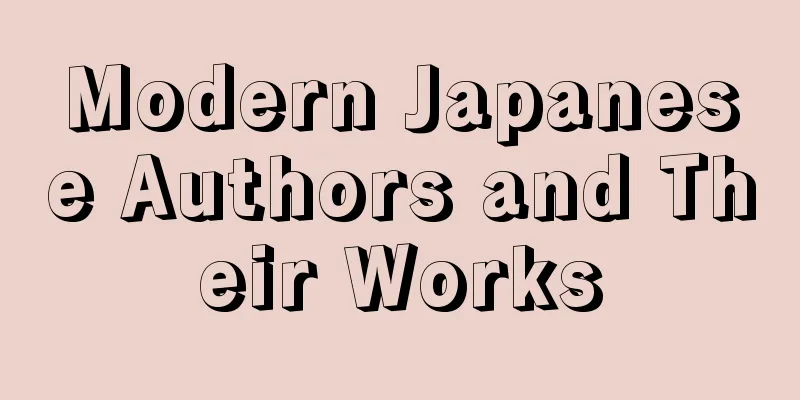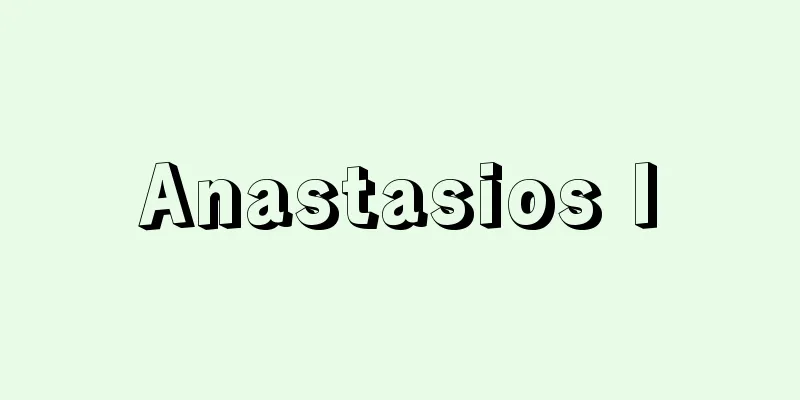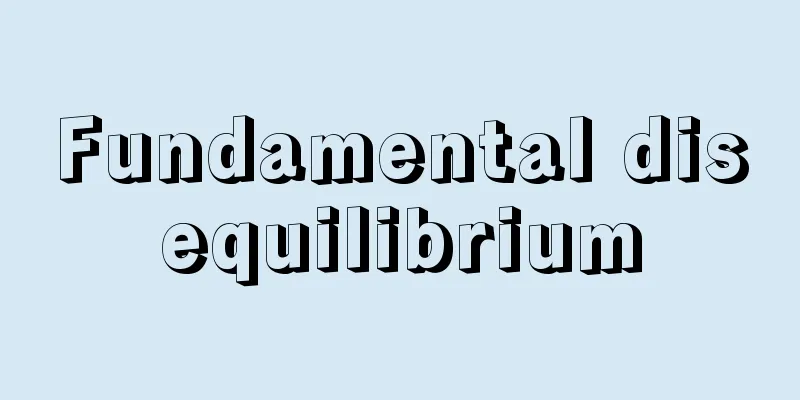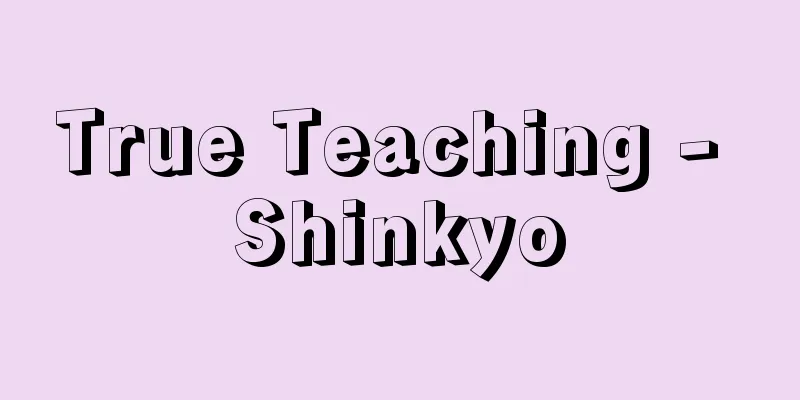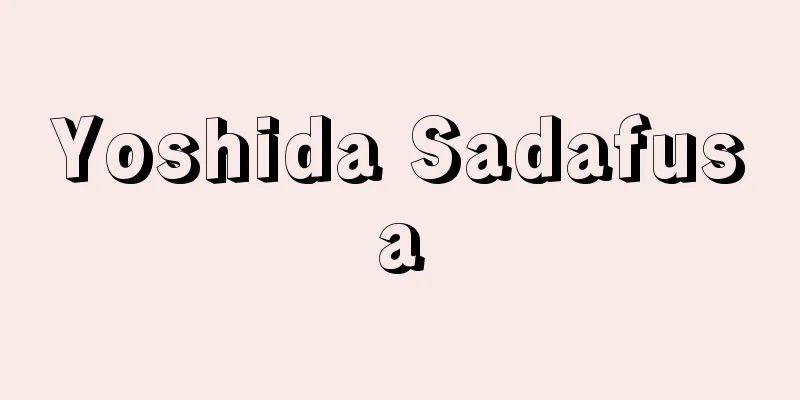Peace Preservation Law - Chian Ijiho
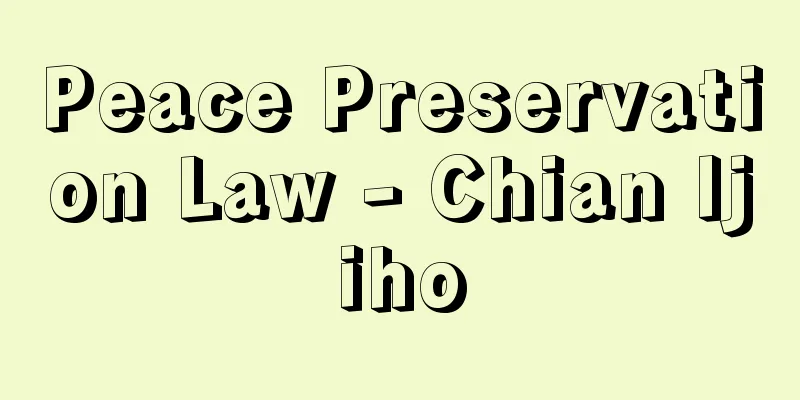
|
This law was enacted in 1925 (Taisho 14) to suppress the social movements that rose after World War I, especially the revolutionary movement centered on the Japanese Communist Party. After it was amended in 1928 (Showa 3), it came to apply not only to Communist Party members, but also to their supporters, labor and peasant unions, and participants in the proletarian cultural movement. After the Japanese Communist Party leadership was destroyed in 1935, the law also turned its fangs on religious organizations and academic research circles, and played an active role as a weapon to control the people's thoughts toward fascism. The law was amended in 1941 to make it even more favorable for the authorities, but was abolished on October 15, 1945 (Showa 20) based on the order of GHQ (General Headquarters of the Supreme Commander for the Allied Powers) immediately after the defeat. There is considerable discrepancy in the number of people who were arrested and prosecuted under this law, depending on the statistics. It is also believed that a considerable number of people were not included in the statistics. With this limitation in mind, a survey by the Ministry of Justice shows that by April 1943, 67,223 people had been arrested under the law, and 6,024 had been indicted. This serves as a guide. The history of the law can be divided into four periods: the period of enactment (1925-1928), the period of full-scale implementation (1928-1935), the period of expansion (1935-1941), and the period of diffusion (1941-1945). [Osamu Watanabe] Establishment periodThe first attempt at new public order legislation to crack down on social movements was the Bill to Control Radical Social Movements, submitted to the 45th Diet in 1922 (Taisho 11). After the bill was aborted, the government tried again to enact the law by emergency imperial decree, but failed to achieve its goal. Taking advantage of the Great Kanto Earthquake in 1923, the government only issued the so-called Order to Maintain Public Order in the form of an emergency imperial decree. However, this was not satisfactory to the regulatory authorities, and thus the Bill to Maintain Public Order was submitted to the 50th Diet in 1925. The law, which was passed with only minor amendments, provided in its Article 1 that anyone who organized or joined an association "with the purpose of changing the national polity or denying the private property system" would be sentenced to imprisonment of up to 10 years. The law also provides for punishment for consultations to carry out goals such as reforming the national polity (Article 2), incitement to carry out goals (Article 3), incitement to commit crimes in order to achieve goals (Article 4), and the provision of benefits in order to achieve goals (Article 5). The law was first invoked in 1926 (Taisho 15) against people associated with the All-Japan Students' Social Science Union, which was made up mainly of Kyoto University students (Gakuren Incident). However, this invocation differed from later full-scale invocations in that the authorities directed it at a target that had no immediate connection to the Japanese Communist Party, which was the primary target of the invocation of the law, and in that the crime of consultations to carry out goals under Article 2 of the law was invoked against the Gakuren (although in later years the invocation of the law was almost exclusively limited to Article 1). It was, so to speak, in the preliminary stages. [Osamu Watanabe] Full-scale launch periodThe full-scale implementation of the law took place on March 15, 1928 (Showa 3) with the nationwide arrest of members of the Japanese Communist Party (the March 15 Incident). There were many subsequent roundups of members of the Communist Party. Meanwhile, the government, while promoting the March 15 Incident and creating the impression that it was a "Communist conspiracy," submitted a bill to amend the law to the 55th Diet. When the bill failed to pass, the government forced through the amendment in the form of an emergency imperial decree. In this 1928 amendment, (1) the death penalty was introduced as the maximum penalty for organizers and leaders of associations aimed at changing the national polity, and (2) a provision was added that made it possible to punish under the law those who "acted to carry out the purpose" of an association, even if they were not members of the association (the so-called crime of carrying out the purpose). (1) was intended to have the effect of intimidating those who participated in the movement, but amendment (2) in particular played a major role. The crime of carrying out a purpose led to a sudden expansion of the scope of the law's application, and labor union activities, cultural movements, and even activities by lawyers on behalf of defendants under the Peace Preservation Law were punished as "acts carried out in the pursuit of the purposes" of the Japanese Communist Party. As the scope of application expanded dramatically, the authorities forced movement participants to renounce their beliefs through the threat of severe punishment, torture, and long-term detention. Repeated crackdowns and forced renunciations led to a rapid decline of social movements, and by 1935 the leadership of the Japanese Communist Party had been destroyed, achieving the purpose that the Peace Preservation Law had been intended to achieve. [Osamu Watanabe] Expansion and diffusion phaseHowever, the Peace Preservation Law took on a new role as the Emperor System became fascist. This was symbolized by a series of crackdowns on religious groups, beginning with the invocation of the law against Omotokyo at the end of 1935. Religions that did not accept the Emperor System's myth of the "national polity" were wiped out by this law, and ideological control of the people was advanced. The law also turned its fangs towards research activities such as the Materialism Study Group, which had not been subject to punishment until then, and non-Communist labor-farmer groups. In order to legally ratify such abuse of the Peace Preservation Law and to make it possible to invoke it on an even wider range of targets, the law was significantly revised in 1941. In Chapter 1, the revised law further increased the penalties for "national polity reform" associations, and expanded the scope of its scope by stipulating that it would also crack down on the activities of "supporting associations," "preparatory associations," and ultimately "groups" that could not be called associations. In addition, a new crime was created to punish religious organizations: the crime of forming associations that "deny the national polity" (not necessarily to the point of reforming it). Furthermore, Chapter 2 added special criminal procedures to the law, such as restrictions on lawyers and denial of the right to appeal, while Chapter 3 introduced a preventive detention system that continued to detain those who did not convert. Thus, the law could no longer be considered a law in the sense of restricting the exercise of power. [Osamu Watanabe] "A Brief History of the Peace Preservation Law by Yasuhiro Okudaira (1977, Chikuma Shobo)" [References] | | | | [Supplementary Materials] |©Shogakukan "> Peace Preservation Law Peace Preservation Law Promulgated on April 22, 2014 Source: Shogakukan Encyclopedia Nipponica About Encyclopedia Nipponica Information | Legend |
|
第一次世界大戦後に高揚した社会運動、とりわけ日本共産党を中心とする革命運動の鎮圧を標榜(ひょうぼう)して1925年(大正14)に制定された法律。その後1928年(昭和3)の改正を経て、共産党員のみならず、その支持者さらには労働組合・農民組合の活動、プロレタリア文化運動の参加者にまで適用されるようになった。日本共産党指導部の壊滅した1935年以降、同法は宗教団体や学術研究サークルなどにまでその牙(きば)を向け、ファシズムへ向けて国民を思想統制する武器として「活躍」した。同法は1941年いっそう権力にとって都合のよいように改正されたが、敗戦直後の1945年(昭和20)10月15日GHQ(連合国最高司令官総司令部)の指令に基づいて廃止された。同法により検挙され、また起訴された者の数がどれほどになるかは、いろいろな統計によってかなりの食い違いがある。さらに統計から漏れた検挙者の数も相当多数に上ると推測される。そういう限定をつけたうえで、司法省の調査によるものをみると、1943年の4月までで同法により検挙された者は6万7223名、起訴された者は6024名に上っている。これが一つの目安となろう。同法の軌跡は、成立期(1925~1928年)、本格的発動期(1928~1935年)、拡張期(1935~1941年)、拡散期(1941~1945年)の四つに区分することができる。 [渡辺 治] 成立期社会運動取締りのための新しい治安立法の最初の試みは、1922年(大正11)第45議会に提出された過激社会運動取締法案であった。同法案の流産後、政府は緊急勅令で再度同法の制定をねらったが実現するに至らず、1923年関東大震災に乗じて、いわゆる治安維持令を緊急勅令の形で出すにとどまった。しかしこれは取締り当局の満足のいくものではなく、かくして治安維持法案が1925年の第50議会に提出されることになった。若干の修正を受けただけで成立した同法は、その第1条で「国体ヲ変革シ又ハ私有財産制度ヲ否認スルコトヲ目的」として結社を組織したり、それに加入した者に10年以下の懲役・禁錮刑を科している。ほかに同法は、国体変革等の目的実行のための協議(2条)、目的実行の煽動(せんどう)(3条)、目的達成のための犯罪の煽動(4条)、目的達成のための利益供与(5条)などの処罰を規定している。同法の最初の発動は、1926年(大正15)京都大学の学生を主体とした全日本学生社会科学連合会関係者に対してなされた(学連事件)。しかし、この発動は権力が同法発動の主たる対象としていた日本共産党とはさしあたり関係のない対象に向けられていること、また学連に対しては同法2条の実行協議罪が発動されていること(後年同法の発動はほとんど1条に限られる)などの点で、後の本格的発動とは様相を異にしていた。いわば小手調べの段階であった。 [渡辺 治] 本格的発動期同法の本格的発動は、1928年(昭和3)3月15日、日本共産党関係者に対する全国一斉検挙(三・一五事件)であった。その後も共産党関係者に対する一斉検挙はたび重ねて行われていく。一方、政府は三・一五事件を宣伝して「共産党の陰謀」を印象づけながら、同法改正案を第55議会に提出した。それが不成立に終わると、政府は緊急勅令という形で改正を強行した。この1928年改正では、(1)国体変革を目的とした結社の組織者、指導者に対して最高刑に死刑が導入され、(2)結社のメンバーでなくとも、結社の「目的遂行ノ為(ため)ニスル行為」をなした場合には同法で処罰する旨の規定(いわゆる目的遂行罪)が加えられた。(1)は運動参加者への威嚇という効果をねらったものであるが、とくに(2)の改正が果たした役割は大きかった。目的遂行罪により同法は適用の対象を一挙に拡大し、労働組合の活動、文化運動、果ては弁護士の治安維持法被告のための活動までもが、日本共産党の「目的遂行ノ為ニスル行為」であるという理由で処罰されるに至った。こうした適用対象の飛躍的拡大に伴って、当局は運動参加者に対し、この重罰の威嚇や拷問、長期の拘禁などによって転向を強要した。たび重なる弾圧と、転向強要によって、社会運動は急速に衰退し、1935年には日本共産党指導部も壊滅して、治安維持法はそれが標榜していた目的を達することになった。 [渡辺 治] 拡張・拡散期しかし治安維持法は、天皇制のファシズム化に伴い新しい役割を受け持つこととなる。それを象徴したのが1935年末、大本(おおもと)教への同法の発動に始まる一連の宗教団体弾圧であった。天皇制の「国体」神話を認めない宗教が、この法によって抹殺され、国民のイデオロギー統制が進む。また、それまで処罰の対象とならなかった唯物論研究会のような研究活動や、非共産党系の労農グループにまで同法の牙は向けられていった。こうした治安維持法の濫用(らんよう)を法的に追認し、さらにいっそう広い対象に発動できるようにするために、1941年同法は大改正される。すなわち改正法は第1章で、「国体変革」結社に対する刑をさらに引き上げ、その「支援結社」「準備結社」あげくのはてには結社といえない「集団」の活動をも取り締まると規定してその対象を拡大した。また宗教団体を処罰するために「国体否定」(変革まではいかずともよい)結社処罰罪が新設された。さらに第2章では弁護人の制限、控訴の否定など同法に特別な刑事手続が新設され、第3章では非転向者を引き続き拘禁する予防拘禁制が導入された。こうして同法は、もはや権力の行使を規制するという意味での法とはいえない代物となったのである。 [渡辺 治] 『奥平康弘著『治安維持法小史』(1977・筑摩書房)』 [参照項目] | | | | [補完資料] |©Shogakukan"> 治安維持法 治安維持法
|
Recommend
Yakkomono - Yakkomono
A type of Kabuki kyogen. The main characters are s...
Pearl gourami (English spelling)
...They generally prefer live food. (a) Pearl gou...
Madeleine
…the last culture of the Late Paleolithic period,...
Ambroid - Ambroid
…It is also found in Myanmar, India, Romania, the...
Specific geography
… [Phylogeography and Regional Geography] Because...
RIA - Ria
Abbreviation for Rich Internet Applications. A te...
Basicity (slag) - Enkido
... Fluorite CaF 2 is an effective flux for incre...
Past (time) - Kako
For example, I see, hear, and feel the outside wo...
Nymylyn
...The former call themselves Chavchyv and live i...
Roermond (English spelling)
A city in the province of Limburg in the southern ...
Broz, J.
…His real name was Josip Broz, and he was also ca...
Takatsukuba Collection - Takatsukuba Collection
A collection of haiku poems. Compiled by Saimu. Pu...
Tochigi [Hot Springs] - Tochigi
A hot spring located in Shirakawa Valley at the so...
Tenyaku - Tenyaku
Miscellaneous taxes were temporarily levied in the...
Guild House
Medieval European guild building. Guild Houses in ...

